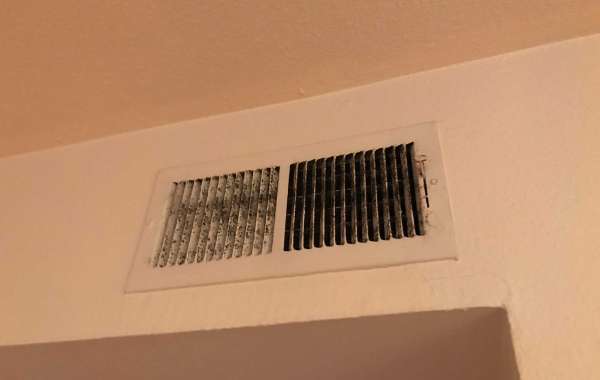
How Dangerous Is Mold In Air Ducts?
If you detect black spots around air vents or experience unusual allergy symptoms while indoors, you may suspect the growth of black mold in your air vents. Encountering black mold in the house is none other than a nightmare and a daunting situation for many homeowners. Undeniably, black mold is poisonous and hazardous, especially to people with allergic or respiratory problems. If you believe that black mold is forming around your air vents or elsewhere in your house, get a professional air duct cleaning in Rocklin as soon as possible. Read further to learn more about Black Mold!
What Is Black Mold?
Stachybotrys chartarum is a very poisonous mold that is also known as "black mold," "toxic mold," or "toxic black mold." Under excessive moisture, it grows on porous, organic surfaces such as drywall and wood. Stachybotrys produce mycotoxins into the air as it grows, which can cause discomfort and perhaps allergic responses when swallowed or breathed. It's also suspected to play a role in sick-building syndrome, characterized by symptoms such as nausea, headaches, dizziness, exhaustion, coughing, dry cough, skin itching, and irritation. However, a conclusive link between the two has yet to be discovered.
Visual Signs Of Mold In The Air Ducts
Musty Odors:
Mold in air ducts is commonly diagnosed by an unpleasant or musty odor. In many circumstances, you'll be able to smell it before seeing it. If you notice a musty or moldy odor that disappears when you turn off your air conditioning or heating, mold in your HVAC system might be the source. Mildew or mold in air vents and ducts can give off a musty, rotting, or stale odor. If you find a persistent problem, especially in places with inadequate ventilation or a lot of moisture, get it examined as soon as possible.
Visible Mold:
Inspect for the earliest indications of mold near AC vents, ducts, and drip pans. Condenser coils draw moisture from the air and deposit it in drip pans, which, if blocked, provide an ideal habitat for mold to thrive. Remember that mold spreads by spores, microscopic particles that are invisible to the human eye, implying you may not see actual areas of mold development straight away. When you see a substantial amount of mold, the infestation might be severe by that time, necessitating expert assistance to remove the mold and ensure it doesn't return.
Symptoms:
If there is enough mold in or near the vents, it can spread into the air and cause allergy-like symptoms such as headaches, nausea, irritated nose and throat, and itchy eyes. Thus, if any person or pet in your house exhibits the above signs whenever the AC is on, there might be mold in the air ducts.
Why Do You Need A Professional Mold Removal Service?
Engaging a professional to clean may appear to be an unnecessary investment, but specialists can remove mold and help prevent it from returning more efficiently and safely than you can. Firstly, cleaning mold with household cleansers won't remove it. Instead, regular cleaning chemicals will leave enough mold behind for it to grow again. Professionals have the necessary equipment to protect themselves and your house or company from the mildew and chemicals used to clear it.
If you attempt to clear mold in air ducts on your own, you risk damaging your HVAC system. Professionals know what to check for, the steps to take to care for your air conditioner, and how to prevent mold in AC ducts. Since they have HVAC expertise, they are familiar with your system and know how to clean it without causing any damage. They also use the necessary mold growth inhibitor solutions to keep it from returning, and they understand the proper disposal of items to avoid contaminating other places.




